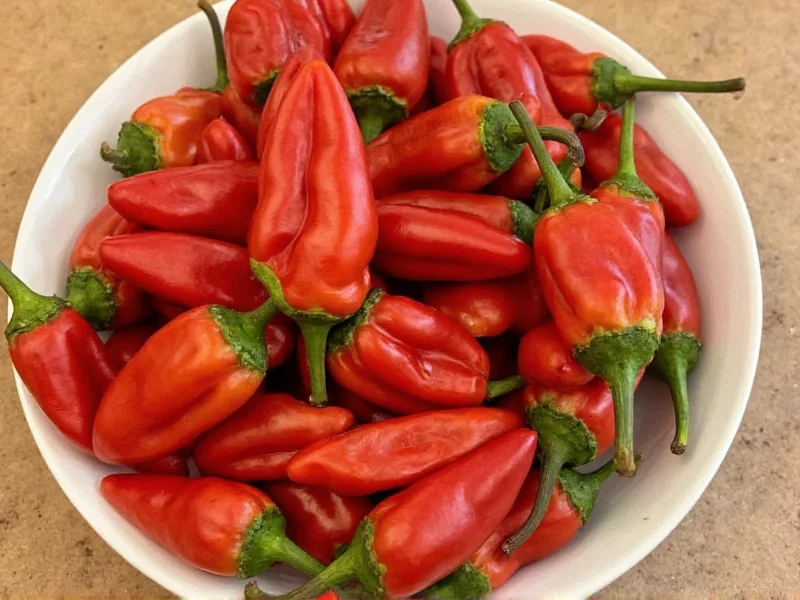If you're reaching for this guide, you've likely discovered your recipe calls for ancho chile peppers but your pantry is lacking this essential Mexican ingredient. As a dried poblano pepper, ancho chiles deliver a unique combination of mild heat, fruity sweetness, and subtle earthiness that's challenging to replicate exactly—but completely possible with the right substitutes.
Understanding Ancho Chile Peppers
Ancho chiles represent the dried form of poblano peppers, harvested at full maturity and carefully dried to develop their signature deep red color and complex flavor. With a Scoville heat rating of 1,000-2,000 units, they sit comfortably in the mild-to-medium heat range, making them versatile for various dishes without overwhelming spice. Their flavor profile combines notes of dried fruit, coffee, and subtle tobacco with a gentle warmth.
Chefs and home cooks rely on anchos for authentic Mexican moles, salsas, stews, and marinades. When you can't find them—which often happens outside specialty markets or in regions without robust Latin American food suppliers—knowing effective substitutes becomes essential for recipe success.
Top Ancho Chile Pepper Substitutes
Choosing the right substitute depends on your specific recipe requirements, heat tolerance, and ingredient availability. Here are the most effective alternatives ranked by similarity to authentic ancho flavor:
1. Guajillo Peppers (Closest Flavor Match)
Guajillo peppers provide the most accurate substitute with their similar mild heat level (2,500-5,000 SHU) and complex flavor profile featuring berry-like sweetness and subtle tang. Reconstitute dried guajillos by soaking in hot water for 15 minutes, then blend into sauces. Use a 1:1 substitution ratio in moles and adobo sauces.
2. Mulato Peppers (Richer Alternative)
Mulatos, another dried poblano variant harvested at even later maturity, offer deeper chocolate and coffee notes with slightly less fruitiness. Their heat level matches anchos almost exactly. Substitute mulatos 1:1 in recipes requiring complex, earthy flavors like traditional mole negro.
3. Pasilla Peppers (Fruity Option)
While pasillas deliver more pronounced berry notes and slightly higher heat (1,000-2,500 SHU), they work well when fruitiness complements your dish. Best for salsas and lighter sauces where ancho's earthiness isn't critical. Use 1 pasilla for every 1.5 anchos required.
4. Chipotle Peppers in Adobo (Smoky Variation)
When your recipe can accommodate smokiness, chipotles provide decent heat similarity with dramatically different flavor characteristics. Use sparingly—1 chipotle equals approximately 3 anchos in heat intensity. Blend with tomato paste to approximate ancho's color and body in stews.
| Substitute | Heat Level (SHU) | Flavor Profile | Best Recipe Applications | Substitution Ratio |
|---|---|---|---|---|
| Guajillo | 2,500-5,000 | Berry, tangy, mild heat | Moles, adobo sauces | 1:1 |
| Mulato | 2,500-3,000 | Chocolate, coffee, earthy | Mole negro, stews | 1:1 |
| Pasilla | 1,000-2,500 | Raisin, berry, mild heat | Salsas, lighter sauces | 1:1.5 |
| Chipotle in Adobo | 2,500-8,000 | Smoky, spicy, tangy | Stews, marinades | 1 chipotle = 3 anchos |
| Homemade Blend | Varies | Tailored to recipe | All-purpose substitute | See recipe below |
Creating Your Own Ancho Chile Pepper Substitute Blend
When specialty peppers aren't available, this versatile homemade blend works remarkably well across most recipes requiring ancho chile powder substitute:
Basic Ancho Substitute Blend
- 1 tablespoon smoked paprika (provides depth and color)
- 1 teaspoon sweet paprika (adds fruitiness)
- 1/4 teaspoon ground cumin (contributes earthiness)
- 1/8 teaspoon garlic powder (enhances savory notes)
- Pinch of oregano (optional, for Mexican dishes)
Mix thoroughly and store in an airtight container. Use 1:1 in place of ancho chile powder. For whole dried pepper substitution, reconstitute the blend by mixing with 2 tablespoons hot water per tablespoon of blend.
Advanced Mole-Specific Blend
For authentic mole recipes requiring ancho chile pepper substitute for mole, combine:
- 2 tablespoons guajillo powder (or substitute)
- 1 teaspoon unsweetened cocoa powder
- 1/2 teaspoon cinnamon
- 1/4 teaspoon cloves
- 1/4 teaspoon allspice
This blend captures the complex spice profile essential for traditional moles when anchos aren't available.
Recipe-Specific Substitution Guidance
Successful substitution requires understanding how ancho chiles function in different dishes:
Mexican Mole Sauces
Authentic mole relies heavily on ancho's unique flavor. When seeking an ancho chile pepper alternative for recipes like mole poblano, prioritize guajillo or mulato peppers. If unavailable, use the advanced mole blend above and add 1 teaspoon of raisin paste to compensate for lost fruitiness.
Stews and Braises
In dishes like chile colorado or pozole, ancho's primary role is color and mild heat. A simple mix of 2 parts sweet paprika to 1 part cayenne works effectively as an ancho chile powder substitute. Add 1 teaspoon of tomato paste per tablespoon of spice blend to maintain rich color.
Salsas and Fresh Applications
For fresh salsas requiring reconstituted ancho peppers, pasilla peppers provide the best texture and flavor match. If using the homemade blend, mix with roasted red bell peppers to achieve proper moisture content and body.
Troubleshooting Common Substitution Issues
Even with proper substitutes, you might encounter these common challenges:
- Too much heat: Balance with additional sweet elements like roasted bell peppers or a touch of honey
- Missing fruitiness: Add 1 teaspoon of raisin paste or a splash of pomegranate molasses per cup of sauce
- Color differences: Incorporate roasted red peppers or a pinch of beet powder for authentic hue
- Texture issues: Blend substitutes with a small amount of soaked bread or tortillas to mimic ancho's body











 浙公网安备
33010002000092号
浙公网安备
33010002000092号 浙B2-20120091-4
浙B2-20120091-4